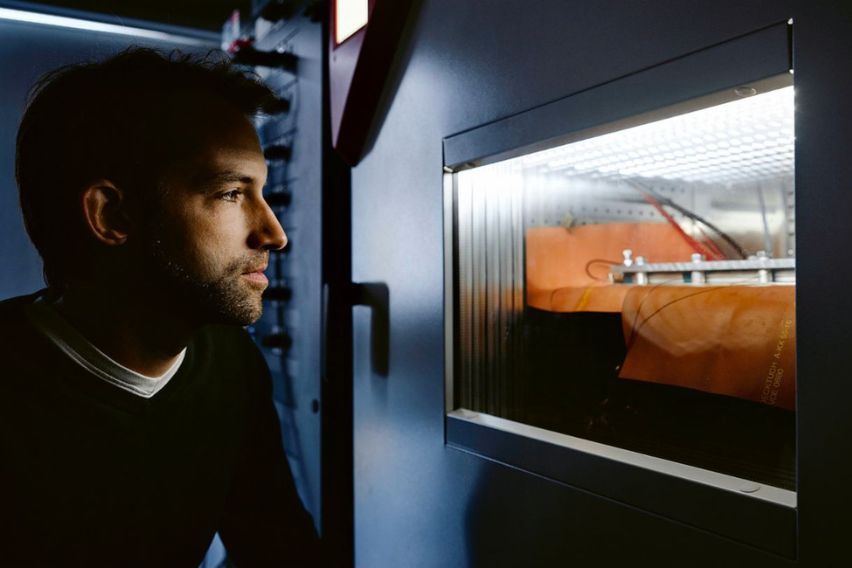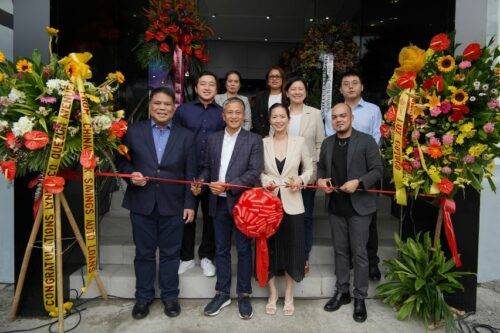Porsche adopts state-of-the-art test methods for high-voltage EV batteries

MANILA: Porsche Engineering implements testing procedures that are specifically tailored to the demands of high-voltage technology in order to continue to increase efficiency in the development of new parts and systems for electric drives.
KEY TAKEAWAYS
On which sites does Porsche conduct tests for high-voltage EV batteries?
High-voltage EV batteries are tested on vehicle and component test benches at Porsche's facilities in Bietigheim-Bissingen, Germany and Nardo, Italy.What is the function of pulse inverters in electric vehicles?
Pulse inverters are essential in electric vehicles as it converts the DC voltage from the battery into the multiphase AC voltage and the corresponding rotating field for the electric drive motor.For instance, high-voltage batteries are tested on vehicle and component test benches at the facilities in Bietigheim-Bissingen, Germany and Nardo, Italy, and hardware-in-the-loop (HiL) simulation environments are available for testing the software for pulse inverters (PIs).
The PI is essential in electric vehicles as it converts the DC voltage from the battery into the multiphase AC voltage and the corresponding rotating field for the electric drive motor. The PI operates in the opposite direction when energy recovery is engaged in overrun mode and transforms the motor's AC output into a DC voltage that is utilized to charge the battery.

“Precise PI control for the various performance and comfort requirements in different driving situations requires highly complex control algorithms and safety functions that have to be tested before the drive is put into operation. This involves, for example, ensuring the drive system enters a safe state in exceptional situations such as a crash with airbag deployment,” Porsche Engineering Technical Project Leader Rafael Banzhaf explained.
Prior to the PI-HiL system's inception, tests had to be performed in actual test benches or on actual vehicles, and there was always a chance that something might get damaged if the control unit's software malfunctioned.

In order to evaluate the PI software, Porsche has created a test bench design that includes the real PI ECU as HiL.
“The ECU is exactly the same as the version in the vehicle, so we can draw reliable conclusions about the function of the software that has been installed. The only modification is a disconnection of the high-voltage components from the low-voltage components such as the PI control board in the ECU. This is necessary for both functional and safety reasons but has no impact on the tests,” Porsche Engineering Development Engineer Thomas Fuchtenhans said.
The PI control board simulates the PI power unit when running the HiL tests; actual hardware is not activated. This is connected to simulations of the high-voltage battery, the electric drive motor, the bus system, and the rest of the vehicle evaluate the impact of car systems like airbags or the brake control system on the PI control. The control loop is concluded by the simulation's delivery of virtual sensor data, such as phase currents and temperatures, back to the PI control unit.
A real-time computer is used to simulate the battery and the rest of the vehicle due to the high demands on real-time capability, while FPGAs (field programmable gate arrays), which are even faster and enable simulation times in the nanosecond range, are used to simulate the power electronics and the electric motor.

The test scopes that can be performed on the HiL test bench are primarily functional tests in accordance with the specifications, but they can also include flash tests of new software, validation tests, tests of the interfaces, diagnostic tools, execution times, cybersecurity, and virtual endurance testing.
“While we cannot completely replace tests on real test benches or in the vehicle with the PI-HiL, we can significantly reduce their scope, thereby lightening the load on the real test benches and reducing costs significantly while increasing safety as well,” Banzhaf said.
A strong collaboration between different Porsche Engineering sites led to the creation of the PI-HiL test bench. There are now six PI-HiL systems in use, and more are planned in the future.
“A special feature of our approach is full remote access to control the test benches,” Fuchtenhans said. “This allows, for example, application engineers running tests in Sweden or the US to control the simulations from their location. Because all test benches are connected to each other, and to the archiving system, the data can be made available on the servers to all participants with immediate effect. The Shanghai location in particular offers great opportunities for high testing efficiency in this regard, as it allows round-the-clock test implementation and evaluation in the international network of teams due to the time difference between Europe and China.”
The high level of automation offered by Porsche Engineering's PI-HiL is another advantage. Customer-provided requirements documentation for the PI control system is automatically imported. The customer specifications are then automatically used to create the test specifications, which are then used to develop a variety of implementable test cases and trials.

With its integration of physical and virtual processes, Porsche Engineering can provide specialized testing services. In either way, customers benefit from expertise and cutting-edge technologies and services.
Photos from Porsche
Also read: Porsche restores original 959 Paris-Dakar rally car
Sell your car at the best price
 Verified and genuine buyers
Verified and genuine buyers
Porsche Car Models
PIMS 2024
Trending & Fresh Updates
- Latest
- Popular
You might also be interested in
- News
- Featured Stories
Porsche Featured Cars
- Latest
- Popular
Latest Porsche Car Videos on Zigwheels

Porsche Car Articles From Carmudi
- journal


















































